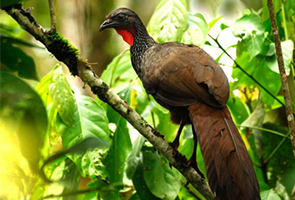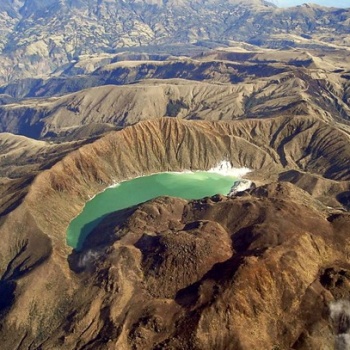New Beginnings: NCI Expands to Protect Colombia’s Biodiversity
04/14/2015
In response to growing threats to the forests that sustain our planet, we plan to double our impact by expanding into Colombia and Bolivia from our existing operations in Ecuador, Peru and Mexico. To date we have entered into partnerships with two of Colombia’s regional environmental authorities and are funding the creation of protected areas to conserve more than 200,000 acres of tropical forests that play a vital role in maintaining the water supply and climate.
 Why Colombia? Over 300 different ecosystems are found in Colombia. It houses nearly 10% of the planet’s biodiversity on less than 1% of its land mass, and leads the world in a number of categories. For instance it is home to an astonishing 1,900 bird species – double that of the U.S. and more than any other country – making the conservation of Colombia’s ecosystems a global priority.
Why Colombia? Over 300 different ecosystems are found in Colombia. It houses nearly 10% of the planet’s biodiversity on less than 1% of its land mass, and leads the world in a number of categories. For instance it is home to an astonishing 1,900 bird species – double that of the U.S. and more than any other country – making the conservation of Colombia’s ecosystems a global priority.
In the Colombian province of Antioquia, the ecosystems are “just packed,” according to NCI staff member, Felipe Serrano. Within a few hundred miles, you can travel from the Pacific coast to the Andes Mountains, with numerous ecosystems in between. NCI recently signed an agreement with CORNARE, one of Antioquia’s regional environmental authorities, to fund the creation of two protected areas. Through these efforts, 150,000 acres of tropical forest will be conserved along with the water supply.
We are also seeking to maintain habitat connectivity. In Ecuador’s neighboring province of Carchi, we are working with the Cofán Survival Fund and Altropico Foundation to protect the striking páramo and cloud forest ecosystems. Just across the border is Colombia’s Nariño province, where NCI is funding the protection of more than 70,000 acres. NCI’s Felipe Serrano summarizes the rationale: “Ecosystems don’t respect jurisdictional boundaries; it makes sense that we would cross the border from Carchi to Nariño.”
Over half of the country’s forests are intact – 53% according to the Convention on Biological Diversity, and the national government has mandated that each region create a system of protected areas. As peace takes hold after years of conflict, we see a major opportunity for conservation by working at the regional level to establish protected areas in the country’s highest priority ecosystems. NCI and Colombia’s regional environmental authorities are seizing this opportunity together.
 Local people are focused on conservation, recognizing that the forests are important sources of water for their crops, as well as for domestic use and energy production, as one-third of Colombia’s hydroelectric power comes from Antioquia.
Local people are focused on conservation, recognizing that the forests are important sources of water for their crops, as well as for domestic use and energy production, as one-third of Colombia’s hydroelectric power comes from Antioquia.
Carlos Betancourt, who works for CORNARE, and his family have lived in El Retiro, near one of the proposed protected areas, since he was eight years old. Now, Carlos is concerned about water quality. “El Retiro’s farmers know that the Melcocho River watershed has a special richness,” he says, “and that richness is its biodiversity and its water. The people here are ready to protect that.”


